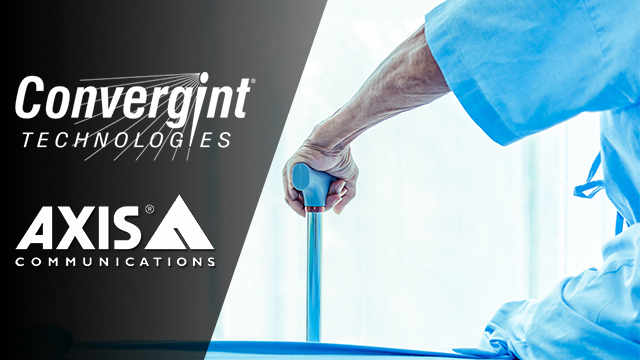According to the World Health Organization, falls are the second most common cause of accidental or unintentional injury deaths worldwide. And a staggering 37.3 million falls are severe enough to require medical attention each year. A wide range of factors contributes to fall risks, such as environmental hazards, illness, neurological, mental conditions, muscle weakness, poor vision, and medication, to name a few.
One thing is certain, though: the risk of falling only increases with age. A growing elderly population combined with rising healthcare costs has sparked new research and technologies to help detect and even prevent falls in high-risk individuals. Convergint, partnered with Axis Communications, can implement these solutions to help detect falls.
1. Physical Monitoring
The extent to which caregivers are physically present varies depending on the fall risks—from intermittent weekly home visits to round-the-clock “patient watch”. And it’s a tradeoff in terms of priorities and considerations. While greater physical presence provides faster fall detection and possible fall prevention, it’s extremely resource-intensive and invasive for those being monitored. On the other hand, sporadic physical visits risk leaving an individual severely injured on the floor for hours or even days before a fall is discovered.
2. Wearable Fall Detectors
Distributed body-worn sensors measure the gait and orientation of the user, sounding or transmitting an alarm when an advanced algorithm senses motion that resembles a fall. There are a variety of options available: pendants, watches, eyeglasses, waist-worn belts, and various combinations thereof. All are designed to automatically alert first responders in the event the user is incapacitated from falling. Some even proactively alert the user to adjust his or her posture to prevent a fall in the first place.
But like any wearable, there’s no guarantee that it will be worn. In fact, it’s quite common that elderly users forget or don’t want to wear their sensors.
3. Pressure & Motion Sensors
A combination of motion and pressure sensors placed on beds, chairs, toilet seats or floors are commonly used in hospitals and elderly care facilities to alert caregivers to the movement of elderly patients and residents. Many of these sensors also trigger an audible alarm or pre-recorded message to warn the user to remain where they are until assistance arrives.
While these sensors provide reliable detection of patient or resident movement, not all movement is indicative of a fall. In fact, even a slight re-positioning of the user can trigger a false alarm.
4. Video Surveillance
Monitoring the elderly with video surveillance at a healthcare facility or senior living facility is an option. With video analytics ranging from rather straightforward cross-line detection to more advanced acceleration and positioning algorithms, it’s possible to achieve the same level of fall detection reliability as with the previously described methods.
The distinct advantage of video surveillance technology for fall detection is first responders can visually confirm alarms remotely and instantly. From a resource-planning perspective, this means that a single person can effectively monitor hundreds or even thousands of individuals, dispatching first responders to assist only when a fall is confirmed. For those being monitored, it provides peace of mind without unnecessary disturbance.
5. Multisensor Technology
While there is no such thing as a 100% effective fall detection or prevention solution, most experts agree that a combination of available sensor technology can greatly increase system reliability. And there is a growing acceptance by seniors as monitoring is a means to extend their independent living opportunities.
Integrating thermal video monitoring with other open-platform based fall detection systems provides valuable redundancy for more effective and reliable fall detection and prevention. More importantly, it provides peace of mind for the elderly, their families, and their caregivers.
Watch how thermal imaging provides better fall detection:

